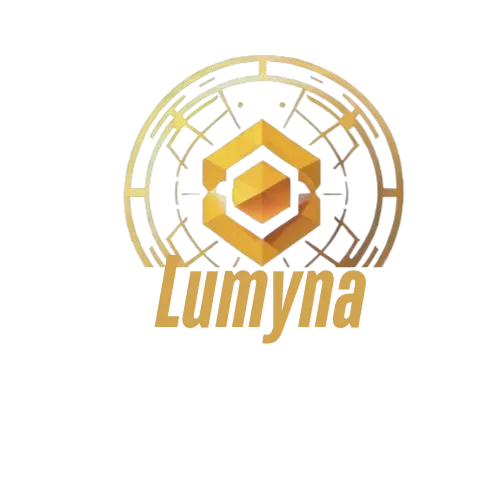Crypto trading is hotter than ever in 2025, with millions jumping in to buy, sell, and hodl their favorite coins.
But here’s the catch: fees can quietly eat into your profits if you’re not careful.
Whether you’re a newbie getting started with crypto trading or a seasoned trader moving big volumes, keeping costs low is the name of the game.
So, what does “low-cost trading” really mean? It’s all about finding exchanges with rock-bottom fees, no sneaky hidden charges, and features that give you a run for your money.
Picking the right exchange isn’t just a nice-to-have—it’s a must for staying profitable. High fees can turn a winning trade into a waste, while a smart choice can keep more crypto in your wallet. That’s why we’ve put together this guide to walk you through the best cryptocurrency exchanges for low-cost trading in 2025.
We’ll dig into the nitty-gritty of fees, highlight the features that matter, and weigh the pros and cons of each platform.
Plus, we’ll throw in some handy comparisons and answer your burning questions at the end. Stick around to find out which exchanges deliver the most value for your trades!
Looking for the top cryptocurrency exchanges for low-cost trading in 2025? This guide ranks platforms based on fees, usability, and value for traders.
What Makes a Crypto Exchange “Low-Cost”?
In 2025, crypto trading is all about keeping your profits intact, and low-cost exchanges are the secret weapon. So, what defines “low-cost”?
It kicks off with trading fees—the charges you face every time you swap coins. Most exchanges run a maker/taker system: makers, who place limit orders to boost liquidity, get lower rates, while takers, who snap up market orders, pay a little extra.
Then there’s withdrawal fees, which sting when you pull your crypto out, and deposit fees, though plenty of platforms skip those now. The dealbreaker? Hidden costs. A true low-cost exchange keeps it upfront—no nasty surprises at checkout.
Fee transparency is non-negotiable. You shouldn’t discover a random network fee after hitting “send.” Beyond that, smart exchanges throw in cost-saving perks: staking rewards for passive income, discounts for high-volume traders, or free withdrawals to keep your cash fluid.
Beginners love these setups because they don’t bleed profits while learning the ropes. Advanced traders? They squeeze every drop of value from low fees on big trades.
Here’s what to check:
- Trading fee structure: Are maker/taker rates tight?
- Withdrawal/deposit costs: Can you move money cheaply?
- Discounts for high-volume traders: Does trading more pay off?
- Additional perks: Staking or referral bonuses a plus?
Choose wisely, and you’ll save big—whether you’re testing the waters or ruling the crypto seas in 2025.
Low-cost crypto exchanges minimize maker/taker fees, offer free withdrawals, and provide transparent pricing—perfect for cost-conscious traders in 2025.
1. Binance: The Fee-Slashing Giant
Binance is the largest crypto exchange by trading volume, and it’s a go-to exchange for cost-conscious traders. Known for its cheap fees, Binance charges just 0.1% for both maker and taker trades—reducing that even further by paying with their native BNB token. Traders have many options such as spot trading, ETFs, futures, staking, and free peer-to-peer (P2P) trades that do not have extra costs.
With over 350 coins to pick from, you’re spoiled for choice, and the advanced tools keep seasoned traders happy.
That said, it’s not flawless. Regulatory heat in places like the U.S. and Europe means you’ll want to double-check access in your region. Still, the perks outweigh the headaches for most.
Table: Binance Fee Tiers
| VIP Level | 30-Day Volume (USD) | Maker/Taker Fee | With BNB Discount |
| 0 | < 50,000 | 0.1% | 0.075% |
| 1 | 50,000 – 1M | 0.09%/0.1% | 0.0675%/0.075% |
| 5 | > 20M | 0.04%/0.06% | 0.03%/0.045% |
Binance is your wallet’s best friend if low fees and variety top your list.
2. Kraken: Affordable and Secure
Kraken’s been a trusted name since 2011, blending affordability with security. In 2025, it’s a solid pick for low-cost trading, starting at 0.16% maker and 0.26% taker fees—rates that shrink as your volume climbs. It’s perfect for folks who value peace of mind, offering margin trading, staking, and killer charting tools for plotting your next move. Customer support’s a standout too, quick to sort out any hiccups.
The downside? Kraken’s altcoin lineup isn’t as wild as some rivals, so if you’re chasing obscure gems, you might look elsewhere. Still, for core coins, it’s a steal.
Comparison: Kraken vs. Binance Fees for $10,000 Trade
- Binance: $10 (0.1% maker) vs. Kraken: $16 (0.16% maker).
- With BNB discount, Binance drops to $7.50—Kraken can’t compete there, but its transparency wins trust.
Kraken’s a no-brainer for traders who want low costs without skimping on safety.
3. KuCoin: Altcoin Haven with Low Costs
KuCoin is your ticket to altcoin paradise in 2025, boasting over 700 coins and fees that match Binance at 0.1% maker/taker. If you buy and hold their KCS token, and trading fees go lower, making it a budget trader’s dream.
Features like trading bots, lending, and high liquidity keep things humming, and the platform’s friendly enough for newbies to jump in without drowning.
The catch? No fiat withdrawals in some spots, so you might need a workaround to cash out. Still, for crypto-to-crypto trades, it’s tough to beat.
Top 3 KuCoin Features for Cost Savings
- KCS Discounts: Shave fees with their token—think 0.08% or less.
- Trading Bots: Automate trades for free, dodging manual costs.
- Lending: Earn interest on idle coins instead of letting them sit.
KuCoin’s a goldmine for altcoin fans who want low fees and flexibility.
4. Coinbase Advanced: Low Fees for Pros
Coinbase Advanced splits off from the retail app in 2025, targeting pros with fees starting at 0.4% maker and 0.6% taker—expensive at first, but they get lower with volume. Coinbase loaded with advanced charting and institutional-grade tools, all wrapped in a user-friendly package that’s fully regulated. Perfect for traders who want polish without the headache.
Compared to Binance or KuCoin, the base fees high, but Coinbase’s reputation for compliance keeps it in the game.
Coinbase Advanced vs. Coinbase Standard Fees
| Platform | Maker Fee | Taker Fee | Notes |
| Coinbase Adv. | 0.4% | 0.6% | Drops to 0.05%/0.1% at 10M |
| Coinbase Standard | 1.49% | 1.49% | Flat rate, no tiers |
5. Bybit: Futures Trading on a Budget
Bybit’s a futures trading champ in 2025, but its spot fees at 0.1% maker/taker is a nice competition for the other exchanges. Bybit offers many futures, with 0.01% maker and 0.06% taker fees, plus leverage up to 100x for bold moves. No KYC for some users keeps it hassle-free, and execution’s lightning-fast.
Fiat support’s low, though, so you’ll likely need crypto to start.
Comparison: Bybit vs. Binance Futures Fees
- Bybit: $1 maker/$6 taker on $10,000 futures trade.
- Binance: $2 maker/$4 taker—Bybit wins for makers, Binance for takers.
Bybit is your pick if futures trading’s your thing and you want fees that don’t bite.
Binance, Kraken, KuCoin, Coinbase Advanced, and Bybit lead as the top cryptocurrency exchanges for low-cost trading in 2025, offering fees as low as 0.1% or less.
How to Choose the Best Low-Cost Exchange for You (300 words)
Finding the perfect low-cost crypto exchange in 2025 isn’t one-size-fits-all—it’s about what works for you.
Start by sizing up your trading habits. Are you a casual trader or moving big volumes? Your trading volume sets the stage, since high rollers score sweeter fee discounts on platforms like Binance or Kraken.
Next, think coins. If you’re hunting obscure altcoins, KuCoin’s your vibe, but Bitcoin basics might steer you to Coinbase Advanced. Location matters too—regulatory blocks or fiat support can nix an exchange fast. Finally, pick your style: spot trading’s simple, while futures (think Bybit) amp up the stakes.
Here’s your step-by-step game plan:
- Assess your trading frequency: Daily trades need razor-thin fees; occasional swaps can handle slightly higher rates.
- Compare fee schedules: Dig into maker/taker rates and withdrawal costs—don’t skip the fine print.
- Check for regional availability: There is no point loving an exchange you can’t use where you live.
- Test with a small deposit: Toss in $20 and trade a bit—see if it clicks before going all-in.
5 Questions to Ask Before Signing Up:
- Are the fees low enough for my volume?
- Does it support my go-to coins?
- Can I use it in my country?
- What extras (staking, bots) fit my strategy?
- How’s the withdrawal process—cheap or a rip-off?
Answer this question and you’ll land an exchange that saves you cash and fits your crypto trading strategy.
Choose a low-cost crypto exchange in 2025 by evaluating fees, coin availability, and features tailored to your trading style—here’s how.
Comparison: Fees and Features at a Glance
Picking the right low-cost crypto exchange in 2025 means knowing the numbers and perks at a glance. Here’s how Binance, Kraken, KuCoin, Coinbase Advanced, and Bybit stack up on fees and features.
Whether you’re all about spot trading, futures, or staking, this table cuts through the noise. Binance leads with tiny fees and broad appeal, while Kraken’s a fortress for security buffs. KuCoin’s altcoin central, Coinbase Advanced keeps beginners comfy, and Bybit’s the futures king. Fiat support varies—Binance and Kraken make cashing out easy, but KuCoin and Bybit lean crypto-only. Check it out below and match your vibe.
| Exchange | Spot Fees (Maker/Taker) | Futures Fees | Staking Available | Fiat Support | Best For |
| Binance | 0.1%/0.1% | 0.02%/0.04% | Yes | Yes | All traders |
| Kraken | 0.16%/0.26% | N/A | Yes | Yes | Security-focused |
| KuCoin | 0.1%/0.1% | 0.02%/0.06% | Yes | Limited | Altcoin traders |
| Coinbase Adv. | 0.4%/0.6% | N/A | Yes | Yes | Beginners |
| Bybit | 0.1%/0.1% | 0.01%/0.06% | Yes | Limited | Futures traders |
Spot a winner for your wallet? Dive in!
Tips to Maximize Savings on Top Crypto Exchanges
Want to keep more crypto in your pocket in 2025? Low-cost exchanges are a start, but these tricks take it further.
- First, grab native tokens like BNB on Binance or KCS on KuCoin—they knock fees down fast, sometimes by 25% or more.
- Second, trade bigger volumes if you can. Higher tiers on platforms like Binance or Kraken mean lower rates—think 0.04% instead of 0.1%.
- Third, avoid making frequent withdrawals; those fees add up. Consolidate into large transfer instead.
- Next, use free features.Staking on Kraken earns you extra coins while you hold, and P2P trading on Binance skips fees entirely—just swap with another user.
- Finally, keep an eye on promotions. Exchanges do not maintain temporary fee cuts or bonus deals so take advantage of them early.
5 Actionable Tips with Examples:
- Hold 10 BNB on Binance and your trading fees will drop from 0.1% to 0.075%.
- Trade $50,000 monthly on Kraken to unlock 0.1% maker fees.
- Withdraw $500 once, not $50 ten times which will help you save on network costs.
- Stake 1 ETH on KuCoin to earn 4% APY for free.
- Catch Binance’s zero-fee BTC promo—trade without a dime lost.
Smart moves mean bigger money—start today!
Related Questions About Low-Cost Crypto Trading in Top Cryptocurrency Exchanges
Q1: What’s the cheapest crypto exchange for beginners?
For beginners looking to keep costs low, Kraken stands out. It starts at 0.16% maker and 0.26% taker fees—way cheaper than many platforms—and those drop even more as you trade bigger volumes. The interface is clean and simple, so you won’t feel lost, and it’s got a rock-solid rep for security, which is huge when you’re just starting. You can trade major coins like Bitcoin and Ethereum without getting overwhelmed, and their support team’s actually helpful if you hit a snag. It’s not the flashiest, but it’s affordable and beginner-friendly without the fee gouge.
Q2: Are there hidden fees on low-cost exchanges?
Sometimes, yeah. Platforms might advertise tiny trading fees, but withdrawal or network fees can sneak up on you. Kraken’s upfront about costs, while others bury them in the terms. Always the terms before you commit.
Q3: How do maker and taker fees work?
Simple: maker fees start when you place limit orders, adding liquidity—like setting a trap for a buyer. Taker fees kick in with market orders, snagging what’s already there. Makers usually pay less (e.g., 0.1% on Binance) since they help the exchange hum.
Q4: Can I trade crypto for free?
Not quite. Zero-fee trading isn’t real yet, but P2P trading on Binance or KuCoin comes close. You swap directly with another user, dodging standard fees—just watch for slow matches or sketchy deals.
Q5: Which exchange has the lowest withdrawal fees?
Binance and Bybit often lead the pack. Binance offers free withdrawals on some coins, and Bybit keeps costs low for crypto transfers. Compare withdrawal rates for your faves—ETH fees can vary wild from platform to platform.
Conclusion
In 2025, Binance, Kraken, KuCoin, Coinbase Advanced, and Bybit stand out as the heavy hitters for low-cost crypto trading. Each brings something to the table—Binance’s dirt-cheap fees, Kraken’s security, KuCoin’s altcoin stash, Coinbase Advanced’s polish, and Bybit’s futures edge.
Whether you’re a newbie or a pro, there’s a fit for you. Don’t just jump in—pick one that matches your style and goals, then trade smarter to keep your profits fat.
One last tip: fee structures shift with the market, so check them regularly to stay ahead. Your wallet will thank you—get started today!




